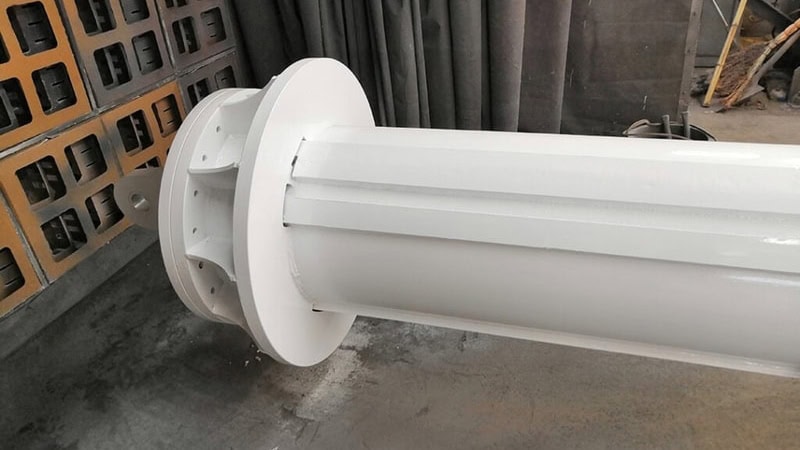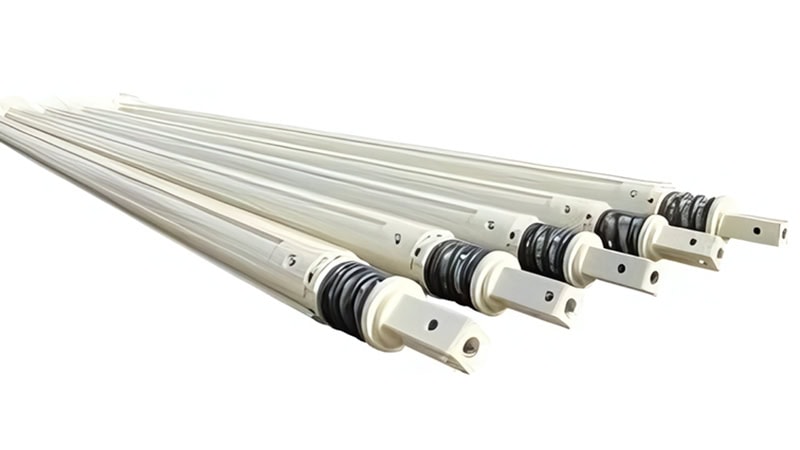
Key Takeaways
- Kelly bar sizes directly define drilling deepness, stiffness, and stability.
- A larger kelly bar diameter increases rigidity and load capacity during the drilling process.
- Section counts determine achievable drilling deepness, with Everstar Kelly Bars reaching up to 130m.
- Drive keys, not friction, control torque stability in all Kelly bar types.
- Everstar customizes Kelly bars for compatibility with leading drilling rigs worldwide.
In rotary drilling rigs, the Kelly bar serves as the primary mechanism for delivering torque to deep foundations. Without this critical component, achieving the necessary down-pressure force and torque transmission required for constructing deep piles would be impossible.
The Kelly bar consists of several interconnected steel pipe sections that telescope into the earth, transferring rotational force from the rotary drive of the drilling rig to the drilling tool.
For industry standards and safety protocols in drilling operations, organizations like the International Association of Drilling Contractors (IADC) provide essential resources and guidance.
The performance of any deep drilling operation is governed by the physical specifications of the equipment. You can find in this article how Kelly bar dimensions, including diameter and section count, determine stiffness, stability, and maximum drilling depth for major infrastructure projects.
The Kelly Bar Torque Transfer for Deep Foundations
The Kelly bar is a key piece of drilling equipment in large-scale piling rigs. Its telescopic steel pipe sections are engineered for robust torque transmission.
The geometric features of a Kelly bar, including its diameter, section count, and length, directly influence torque stability, stiffness, and achievable drilling depth.
Selecting the correct kelly bar drilling equipment ensures safety and efficiency in deep piling operations.
Everstar’s Role in the Drilling System
Everstar Machinery is a global supplier of high-performance rotary drilling accessories. We design customized products compatible with major hydraulic rotary drilling rigs from Bauer, Sany, and XCMG, among others.
Since Everstar has invested all its technical research and development efforts into the design and production of Kelly bar, it focuses on producing heavy-duty Kelly bars that enhance drilling efficiency, minimize wear, and reduce downtime in challenging drilling conditions.
Kelly Bar Diameter: The Key to Stiffness and Load Stability

The Kelly bar diameter is the primary dimensional factor governing stiffness and load stability.
During high-stress drilling operations, a Kelly bar must withstand strong lateral and torsional forces. A larger diameter increases rigidity, prevents bending, and ensures better stability throughout the drilling process.
This stability improves drilling tool accuracy and reduces wear on the inner and outer sections of the bar.
Built for Strength: High-Performance Steel and Manufacturing Processes
Kelly bars used for deep drilling must be made from high-performance, heavy-duty materials to handle constant stress and maximum torque.
Everstar manufactures Kelly bars from 35CrMo, 30CrMo, ZT600, and Q550 steel pipe materials. These are enhanced through quenching, tempering, and shot blasting, processes that reduce wear and extend service life.
The production quality of the Kelly bar directly influences how form pressure force is applied and the durability of the drilling devices.
Section Counts and Maximum Drilling Depth Capacity
Kelly bar sizes correspond directly to required drilling depth, with telescopic sections typically ranging from 3 to 6. The number of sections dictates the maximum depth achievable.
As a customized service, Everstar has produced 22-meter Kelly bars with eight sections for specialized rigs working in low headroom environments.
Achieving Extreme Depths in Construction
Kelly bar length and section count depend on project-specific drilling deep requirements. Fewer sections offer greater stability and lower cost, while more sections allow for extreme depths.
Everstar Kelly bars can reach depths of up to 130 meters. This makes them ideal for bridges, transmission towers, and skyscrapers, which require deep piles for foundation stability.
Torque Transmission
The main function of a Kelly bar is to transfer torque from the rotary drive to the drilling tool. Torque is the rotational force that turns the tool to bore the hole.
Everstar offer several types of Kelly bars, from interlocking kelly bars to Multilocking and Friction Kelly bars with a commom transfer torque feature: via drive keys in all types.
Interlocking Kelly Bars: Stability for Challenging Soil Conditions
Interlocking Kelly bars are commonly used in demanding drilling environments. These Kelly bars ensure stability and strong torque transmission by locking their sections together using external key systems and lock recesses.
This structure provides consistent pressure transmission and is ideal for deep foundations in dense sand or gravel, where maximum torque is required. The interlocking Kelly design enhances rigidity and minimizes wear during heavy-duty operations.
Multi-Locking Kelly Bars are a variation of interlocking Kelly bars, featuring multiple lock recesses that allow operators to secure the bar at various pressurizing points during drilling. This flexibility maximizes stiffness and is ideal for large-diameter piles in complex drilling conditions.
Friction Kelly Bars: Relying on Gravity, Not Friction Force, for Down Pressure
Friction Kelly bars function differently from interlocking Kelly bars but use the same basic principle to transmit torque. They advance mainly under their own weight and gravity, providing the necessary down pressure force.
Although they use friction mechanisms for downward movement, force transmission still depends on reinforced drive keys. This results in smoother drilling and makes these key components suitable for medium-depth projects.
Application Scope

The Kelly bar is designed exclusively for piling rigs and rotary drilling machines. It transfers crowd pressure and torque to the drilling tool, ensuring consistent force distribution.
Everstar’s high-performance Kelly bars are suitable for high-load foundations, large-diameter holes, and deep drilling operations. They enable rotary drilling rigs to reach depths of up to 130 meters, which is essential for major infrastructure construction.
Indispensable Drilling Rigs for Large-Scale Piling
It is essential to note that Everstar Kelly bars are not suitable for small projects, such as guardrails or solar pile driving, where lightweight machines are more suitable. Instead, standards Kelly bars are critical tools for large-scale drilling applications.
FAQs – Kelly Bar Sizes
What is the diameter of a Kelly bar?
The diameter of a Kelly bar refers to the external size of the concentric steel pipe sections that make up the bar. This dimension is crucial as it affects the structural strength and ensures compatibility with the rotary drive and Kelly box of the drilling rig. Different diameters are selected based on the rig’s torque capacity and the drilling requirements, balancing durability and operational fit.
How does the Kelly Bar’s diameter affect stiffness?
A wider diameter increases the Kelly bar’s rigidity and stiffness, making it more resistant to bending under high torque or lateral loads encountered during drilling. This enhanced stiffness improves drilling accuracy and stability, especially at greater depths, by maintaining the alignment of the drilling device and minimizing deflection caused by forces during operation.
What is the maximum drilling depth of an Everstar Kelly Bar?
An operating sample of Everstar Kelly bars is achieving a maximum drilling depth of up to 130 meters, depending on the number of sections and the configuration of the Kelly bar. This deepness capacity supports deep foundation piling and large-diameter hole drilling while maintaining torque transmission and structural integrity of the Kelly bar throughout the operation.
Conclusion: The Essential Role of Dimensional Precision in Deep Drilling Performance
The Kelly bar’s ability to achieve great depths, maintain stiffness, and deliver reliable torque depends entirely on its diameter and section count.
With an adequate drilling method, the Kelly bar size ensures efficient torque transmission and long-lasting performance.
Everstar provides customized solutions such as interlocking Kelly bars built from high-strength materials and reinforced external key systems, compatible with Bauer, Sany, and XCMG rigs.
Selecting a high-quality Kelly bar is crucial to ensure project safety, minimize downtime, and maintain structural integrity in deep foundation construction.
Customize Your Kelly Bar and Consult Our Drilling Experts
For foundation projects in construction requiring dimensional precision, superior stiffness, and extreme drilling depth, Everstar Machinery offers specially designed Kelly bar solutions.
Share your drilling rig model such as Bauer, Sany, or XCMG, and operational requirements with our experts to receive a customized solution.
Everstar’s engineering team can help you select the most efficient Kelly bar configuration for your specific rig model and ground conditions.